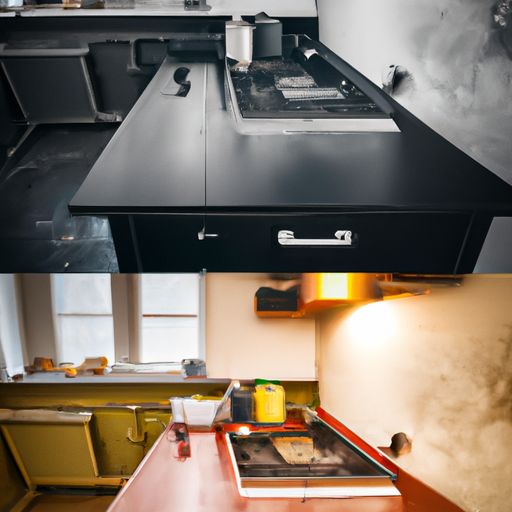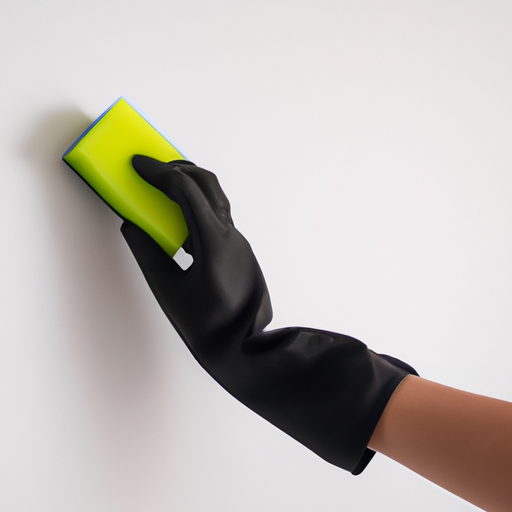Ever looked around your kitchen and wondered how it became so grimy? Unearth the secrets to restoring its sparkling clean glory with our Ultimate Guide to Deep Cleaning Your Kitchen. We take you through every nook and cranny, from countertops to the insides of your appliances. Don't let the dirt and grime intimidate you anymore!
"Why Is Deep Cleaning Your Kitchen So Important?"
Deep cleaning your kitchen is not just about maintaining a clean and organized space. It goes beyond the surface-level cleaning that we do on a regular basis. Deep cleaning is essential because it helps eliminate hidden bacteria, germs, and grime that can accumulate over time.
The kitchen is one of the most frequently used areas in our homes, making it a breeding ground for bacteria and foodborne illnesses. By deep cleaning, you are effectively reducing the risk of contamination and ensuring a safe and healthy environment for food preparation.
Additionally, deep cleaning your kitchen can also prolong the life of your appliances and surfaces. Grease, food residue, and dirt can build up on countertops, stovetops, and inside cabinets, causing damage and deterioration. Regular deep cleaning helps remove these substances, preventing long-term damage and costly repairs.
Deep cleaning your kitchen also promotes a more pleasant cooking experience. A clean and fresh environment can inspire creativity and make your time in the kitchen more enjoyable. It can also help eliminate unpleasant odors that may linger from cooking and food waste.
A before and after photo of a dirty and clean kitchen
The Tools of the Trade: What Do You Need to Deep Clean Your Kitchen?
When it comes to deep cleaning your kitchen, having the right tools is essential. Here are some must-have items to ensure an effective and thorough deep cleaning session.
- 1. Cleaning Solutions and Disinfectants:
To tackle tough stains, grease, and bacteria, you'll need a variety of cleaning solutions. Stock up on all-purpose cleaners, degreasers, and disinfectants. Look for products that are specifically designed for kitchen surfaces and follow the instructions for safe and effective use. - 2. Scrub Brushes and Sponges:
Deep cleaning often requires a bit of elbow grease, and that's where scrub brushes and sponges come in handy. Invest in a variety of brushes with different bristle strengths to tackle different surfaces. Sponges with scrubbing surfaces are great for removing stuck-on grime from countertops and cookware. - 3. Microfiber Cloths and Paper Towels:
These are essential for wiping down surfaces and drying them effectively. Microfiber cloths are great for capturing dust and dirt without leaving streaks, while paper towels are convenient for quick cleanups and absorbing spills. - 4. Vacuum or Broom:
Before getting into the deep cleaning process, it's important to sweep or vacuum the kitchen floor to remove loose dirt and debris. A vacuum with attachments can also be used to clean corners, crevices, and baseboards. - 5. Cleaning Gloves:
Deep cleaning can involve working with harsh chemicals and hot water, so it's important to protect your hands. Invest in a pair of sturdy cleaning gloves that fit well and provide adequate protection.
How to Tackle the Grit and Grime: A Step-by-Step Process
Deep cleaning your kitchen can seem overwhelming, but with a step-by-step process, you can tackle the grit and grime effectively. Here's a guide to help you get started:
- 1. Clear the Clutter:
Begin by removing all items from your countertops, cabinets, and drawers. This will give you a clean slate to work with and make it easier to clean every nook and cranny. - 2. Start with the Surfaces:
Begin by wiping down all the surfaces in your kitchen. Use an all-purpose cleaner and a microfiber cloth to clean countertops, backsplashes, and appliances. Pay attention to areas that are often overlooked, such as the top of the refrigerator or the inside of the microwave. - 3. Scrub the Sink:
The kitchen sink is a hotspot for bacteria and grime. Scrub it thoroughly using a sink cleaner and a scrub brush. Don't forget to clean the faucet and handles as well. - 4. Tackle the Appliances:
Clean the inside and outside of your appliances, including the oven, stovetop, refrigerator, and dishwasher. Use appropriate cleaning solutions for each appliance and follow the manufacturer's instructions. Remove any food debris, grease, and stains. - 5. Clean the Cabinets and Drawers:
Wipe down the exterior of your cabinets and drawers using a gentle cleaner. Pay attention to handles and knobs, as they can accumulate dirt and grime. If needed, take the time to organize and declutter your storage spaces. - 6. Don't Forget the Floors:
Finish off your deep cleaning session by giving the kitchen floor a thorough cleaning. Sweep or vacuum to remove loose dirt, then mop using a floor cleaner suitable for your flooring type.
A series of images showing the cleaning process, from scrubbing surfaces to cleaning appliances
Did you miss a spot? Double-Checking Your Work
Once you've completed the deep cleaning process, it's important to take a moment to double-check your work. Even the most thorough cleaners can miss a spot or overlook a hidden area. Here are a few tips to ensure that you haven't missed any areas in your kitchen:
1. Check the High and Low Spaces:
Take a look at the high and low spaces in your kitchen that are often overlooked. Look up at the ceiling for any cobwebs or dust that may have accumulated. Don't forget to check the corners of the room and the tops of cabinets for any missed dirt or grime.
- 2. Inspect the Hard-to-Reach Areas:
Take a closer look at those hard-to-reach areas that may have been missed during the initial cleaning. Check behind appliances, under the sink, and behind the refrigerator for any hidden dirt or debris. Use a flashlight to help you spot any overlooked spots. - 3. Smell for Lingering Odors:
Deep cleaning your kitchen should also involve eliminating any lingering odors. Take a deep breath and see if there are any unpleasant smells still present. If necessary, use an odor neutralizer or freshener to ensure your kitchen smells clean and fresh.
Deep Cleaning Your Kitchen:
| Task | Time | Materials | Instructions |
|---|---|---|---|
| Clean Countertops | 30 minutes | All-purpose cleaner, Disinfectant, Sponge, Towels | 1. Wipe down countertops with all-purpose cleaner. 2. Spray the surface with disinfectant and let sit for 10 minutes. 3. Wipe the surface with a clean towel. |
| Clean Sink | 15 minutes | All-purpose cleaner, Disinfectant, Sponge, Toothbrush | 1. Wipe down sink with all-purpose cleaner. 2. Spray the surface with disinfectant and let sit for 10 minutes. 3. Scrub the sink with a toothbrush. 4.Rinse and dry with a clean towel. |
| Clean Oven | 2 hours | Baking soda, Water, Dish soap, Sponge, Towels | 1. Remove oven racks and soak in soapy water. 2. Mix baking soda and water to make a paste. 3. Spread the paste inside the oven and let sit for at least 1 hour. 4. Wipe down the oven with a damp sponge. 5.Rinse and dry with a clean towel. |
| Clean Fridge | 45 minutes | All-purpose cleaner, Disinfectant, Sponge, Towels | 1. Empty the fridge and discard expired food. 2. Wipe down shelves and drawers with all-purpose cleaner. 3. Spray the surface with disinfectant and let sit for 10 minutes. 4. Wipe the surface with a clean towel. 5. Replace food and organize shelves. |
With the right tools and this comprehensive guide, deep cleaning your kitchen is no longer a daunting task. Remember, a clean kitchen is a healthy kitchen. So roll up your sleeves, and let's make your kitchen the heart of the home again!



